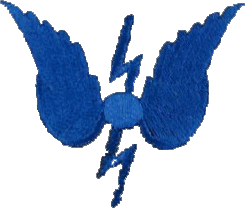|
|
|
|
|
DATE OF DESIGN | |
1. 4G - 1925
2. 6E - 1929
3. Stabiliser Unit - 1931 |
|
FREQUENCY RANGE | |
1. 4G - 1785 TO 2500 kc/s.
2. 6G - 1785 to 2500 kc/s.
3. Stabiliser Unit - 1700 to 2900 kc/s. |
|
POWER SUPPLIES | |
1. 4G - Motor Generator 300W 400V
2. 6E - 20V Battry.
3. Stabiliser Unit - Motor Generator 300W 400V. |
|
RANGE IN MILES | |
N/K or N/A |
|
TYPE OF SET (VALVES USED) | |
1. Valve x 2.
2. 6E -
3. Stabiliser Unit - Valve x 2. |
|
WAVEFORM | |
1. 4G - ICW.
2. 6E - SPARK.
3. Stabiliser Unit - |
|
METHOD OF PRODUCING OSCILLATIONS | |
Self or Quartz Crystal Resonator. |
|
WHERE USED/FITTED | |
The Type 43 is a low power valve transmitter (4G) with a "stabilising unit" and an emergency Spark Transmitter. The 4G and the Stabiliser and contained in separate boxes. The dates of design shown below in the table start in 1925 and finish in 1931, so the overall set can be considered as a 1931 transmitter.
Type 43. It is a low power valve set with a Stabiliser either producing Self Oscillations or Oscillations from a Quartz Resonator (Crystal). It is fitted in Auxiliary W/T Offices of Heavy Ships and Cruisers, and as special cases, in W/T Offices of Depot Ships and Repair Ships. It has an associated emergency Spark transmitter.
In this series also were the Types 43A, 43C and 43Y. Several heavy ships, cruisers and depot ships were fitted.
The 43A became obsolete very early in the 1930's and was replaced by the Type 52HW. The transmitter section was a 4G with a choice of Self oscillation, or crystal controlled with a stabiliser correcting any frequency drift of the crystal oscillator output. It produced ICW in a frequency band of 1700-2400 kc/s with just 25W power output and a range of 20 miles. The fixed crystal controlled frequencies were 1875 kc/s, 2000 kc/s, 2150 kc/s and 2333 kc/s. With the 43A came a Spark transmitter (the 6E) operating over 1700-2400 kc/s giving an effective range of just 10 miles. The 43A was also fitted ashore in the Portsmouth, Chatham and Devonport Signal Schools for instructional purposes.
Transmitter 43C used a 4G transmitter and was identical to the 43A except that it had "special" power supplies (unlike the 43A which used conventional supplies), again capable of Self oscillation or crystal control (with stabiliser) on the same fixed frequencies as shown above for Type 43A. There were only two ships fitted with this set, the Warspite and the Royal Oak both ships having two of them. The successful Warspite (famous for both world wars) landed her Type 43C's in favour of a Type 52CFH, but the hapless and sad Royal Oak took the only surviving ship-fit Type 43C's to the bottom of Scapa Flow on Friday 13th October 1939. Had she not been sunk, she too would have been fitted with a Type 52CFH. Apart from the two afloat fittings, the 43C was fitted ashore in the Portsmouth Signal School for instructional purposes.
Type 43Y was a extempore set (cobbled together if you want) fitted in the CRR (central receiving room) to avoid manning auxiliary W/T offices. It was a valve transmitter on 1700-2400 kc/s, Self oscillator, ICW, ships mains, 20 miles range. Rodney, Shropshire, Southampton, Sussex, Woolwich were all fitted with this short lived transmitter. |
|
ASSOCIATED WAVEMETER | |
N/K or N/A |
|
FURTHER READING | |
|
|
IMAGES, PHOTOS, DOCUMENTS, SCHEMATICS ETC.
| |
|
|
NOTES. | |
Photo 1. Type 43 with Stabiliser Unit
Photo 2. Type 43 Transmitter 4G.
Photo 3. Transmitter 4G. |


